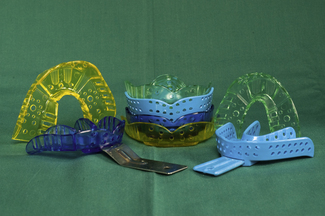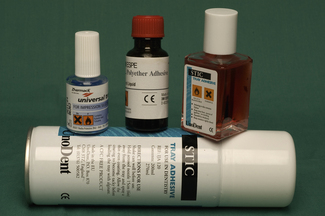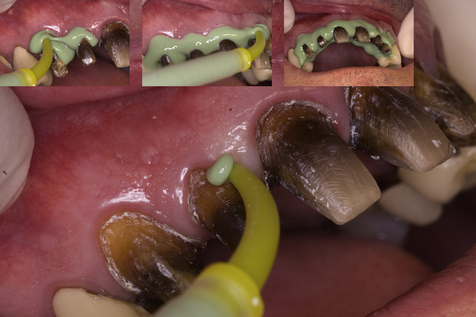Chapter 13 Impression materials and techniques
The materials
Hydrocolloid impression materials
Before taking the impression an appropriately sized impression tray should be selected (Figure 13.1). A perforated plastic stock tray is ideal for this as the material is not too viscous and should not distort the tray on seating. Such trays are for single use only and would distort if heated during a decontamination process. Although a metal tray could be used as an alternative (Figure 13.2), thorough cleaning and decontamination of the trays between patients is time consuming and, as such, disposable single-use plastic trays are more popular and cost effective. A tray should be selected that seats fully over the dentate arch with its flanges not bedding into the soft tissues of the buccal, labial and lingual sulci. Occasionally, the stock tray needs modifying with impression compound to increase its extension to completely cover the dentition and areas of interest.
Despite the fact that stock trays have perforations and ridges to retain the set impression material in the tray, a tray adhesive should also be used. Alginate adhesive is supplied either in a bottle for use with a brush or in an aerosol can (Figure 13.3). Brushing the adhesive on the fit surface of the tray and just over its flanges ensures an even thin layer of adhesive; however, the adhesive needs to be dispensed into a disposable dappens pot first and applied with a single-use brush to prevent contamination of the adhesive in the bottle. To simplify matters and avoid problems with cross-infection control, aerosol adhesives can be used. The work surface should be covered with a paper napkin and the fit surface sprayed with an even thin application of adhesive. Before use the adhesive should be dry and tacky; if the adhesive is applied too thickly it will not dry and will act as a lubricant, with the risk of the impression material pulling away from the tray on withdrawal from the mouth.
Elastomeric impression materials
Silicones
A two-phase, single-stage technique
The two-phase (or twin mix) refers to the fact that two viscosity materials are used to take a single impression, with a light body wash being syringed around the tooth preparation to record the fine detail and either a heavy body or putty material loaded into the tray to take up the bulk of space between the preparation and the tray. The wash is syringed around the tooth preparation whilst the dental nurse is mixing the heavy body or putty and loading it into the stock tray (Figure 13.4); the heavier bodied materials have the benefit that they do not flow from the tray. Before the wash begins to set, the loaded tray is seated over the teeth, with the heavier bodied material forcing the low viscosity wash into the intricate recesses around the tooth preparation (Figure 13.5). Both wash and heavier bodied materials set at the same time, hence the term single-stage technique.
Stay updated, free dental videos. Join our Telegram channel

VIDEdental - Online dental courses






